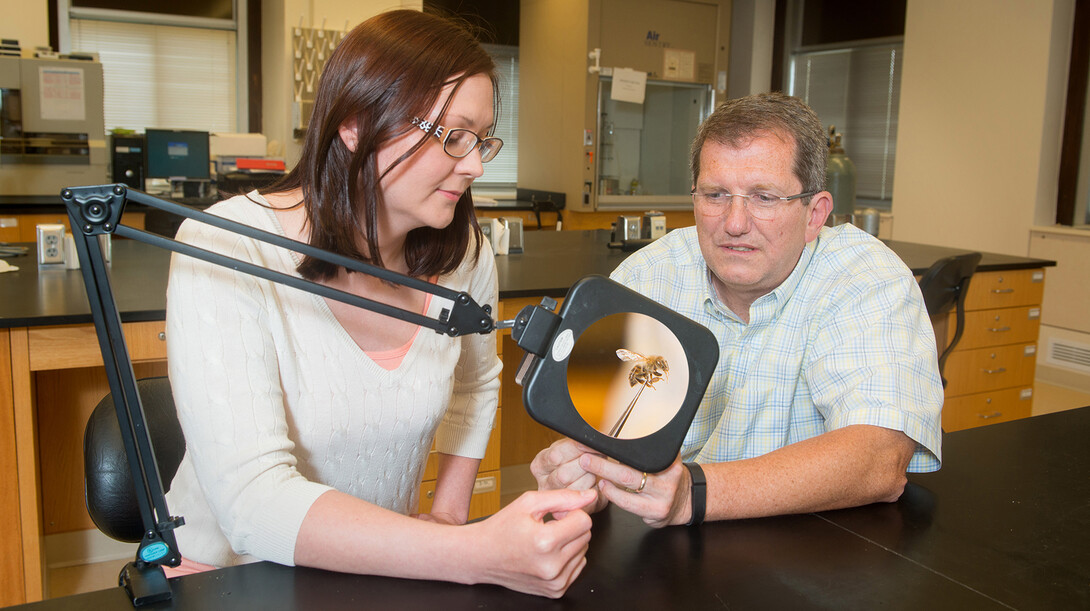
Certain insecticides common to U.S. orchards appear to make honey bees substantially less busy, according to a new study led by UNL entomologists.
Released just days prior to a May 19 White House report calling for greater protection of pollinators, the study suggests that exposure to sub-lethal doses of insecticides known as pyrethroids may reduce honey bee movement and social interaction.
The authors found that honey bees treated with moderate and high doses of a pyrethroid called esfenvalerate moved 61 and 71 percent less, respectively, than untreated bees over a 24-hour span. Bees exposed to high doses of esfenvalerate and its cousin permethrin also spent 43 and 67 percent less time interacting with their neighbors.
Though legislators have put limits on pyrethroid use, the National Agricultural Statistics Service has reported that the insecticides are applied across roughly 1 million acres of U.S. orchards. Growers regularly place honey bee colonies in these orchards, where pollination improves the yield and quality of crops ranging from almonds and cherries to peaches and pears.
While cautioning that the study was conducted under laboratory conditions, lead author Erin Ingram said that behavioral changes similar to those found by the UNL team would have significant consequences if manifested in natural environments.
“The strength of a (honey bee) colony relies on the proper functioning of its members to perform all of the necessary duties, such as foraging for food and communicating with other bees,” said Ingram, a doctoral student at UNL. “If bee locomotion, social interaction or ability to feed are impaired by sub-lethal exposure to pesticides, this could potentially impact colony survival or performance.”
The researchers gathered data on 384 honey bees by recording them on video and tracking their behavior via a software program. Though this methodology has been applied to the study of animals such as mice, fish and other insects, UNL’s Department of Entomology has recently helped establish it as a tool for analyzing bees, Ingram said.
“Animal behavior has typically been studied manually through time- and effort-intensive observation,” Ingram said. “With additional work, this system could potentially be developed into an efficient and relatively cost-effective way to examine changes in honey bee behavior in response to low levels of pesticide exposure as part of the risk assessment process.”
The recently released White House report addresses several such risks, including insecticides, before laying out numerous initiatives designed to mitigate them in coming years.
“The fact that there is an official strategy for improving pollinator health at the federal level is a great thing,” Ingram said. “This strategy addresses a major issue facing pollinator health: the availability of habitat and food resources. While we might not understand all of the disease, pesticide or parasite interactions that are affecting bees, we know that bees need a variety of flowers to meet their nutritional needs.
“Planting pollinator-friendly flowers provides a way for anyone to help out pollinators, and it’s a step the federal agencies can take right now to directly impact pollinator survival and health.”
Ingram and her colleagues published their study in the journal Chemosphere. Her co-authors included Marion Ellis, professor emeritus of entomology; Blair Siegfried, Charles Bessey Professor of entomology; and Julie Augustin, a researcher at the University of Avignon (France). The team received support from the Richard P. Kimmel and Laurine Kimmel Charitable Foundation.








